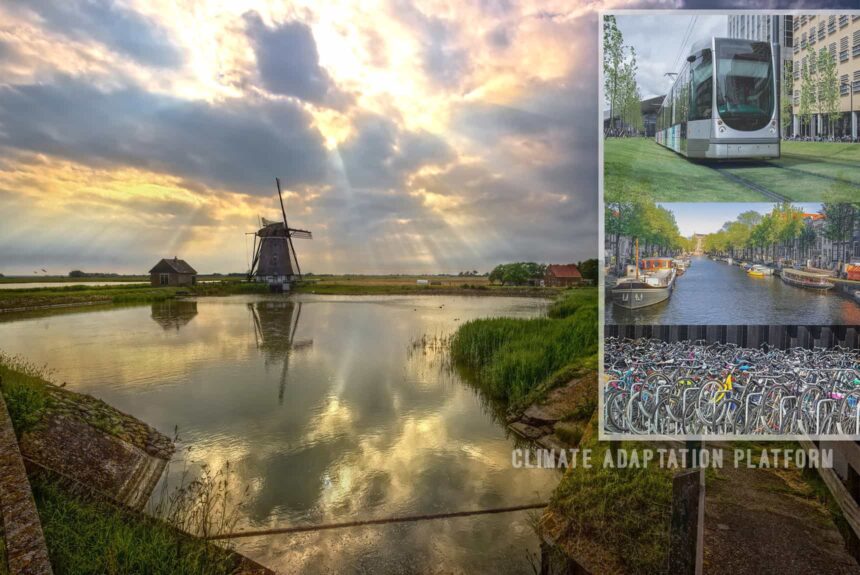The Netherlands is always facing the threat of floods. Despite the country’s flood protection measures, dyke building and reinforcements, making it the best-protected delta in the world, it can never fully shake off its flooding risk.
Perhaps, its worst flood in living memory was in 1953. A heavy north-westerly storm and a high tide caused a storm surge that toppled the sea defences resulting in extensive flooding. The disaster claimed 1,836, several thousands of animals, and many homes were destroyed.
The water reached a height of 3.85 metres above Normal Amsterdam Level (NAP) at the Hook of Holland and 4.55 m above NAP in the province of Zeeland. Many dykes could not withstand this level and were breached, causing severe devastation equivalent to 5.4 billion euros in today’s money.
To ensure this devastation never happens again, the government established the Dyke Restoration Coordination Agency to repair all the dykes. Donations also poured in from home and abroad to help restore the Netherlands and provide immediate relief to the flood victims.
Since the 1953 flooding, work on flood risk management in the country has never stopped. Water authorities continue to strengthen dikes, raise and reinforce flood defences, manage high water levels, raise public awareness, and issue timely flood warnings to prevent the disaster and destruction from happening again. Every year money is invested in strengthening these flood defences.
Despite Netherlands’ extensive flood management measures and defences, around 59% of its land surface is still prone to flooding, including 26% below sea level.
Climate change poses another threat to the country, altering precipitation patterns, rising sea levels, and temperatures which could increase flooding risks.
According to the IEA, the country’s mean temperature rose 2.3°C between 1901 and 2020 and is likely to continue rising. Its annual rainfall increased by 21% from 1906 to 2020 and is projected to rise further. As a result, extreme precipitation events could become more frequent and intense, amplifying flood risks. At the same time, the ensuing shifts to warm and cold temperatures can stress its energy networks.
Planning for the future
How will climate change modify the Netherlands in the future? It all depends on how high the sea level rise and temperatures will be. A Vrije Universiteit Amsterdam (VU Amsterdam) article discusses how the country will look in the year 2040 in terms of how high sea levels will be, where people will live and work, and what the consequences will be to agriculture and other sectors. Using the LANDS research project for insight, the article gives an overview of the different possible images of the future of the Netherlands.
The Royal Netherlands Meteorological Institute generated two future scenarios – A warm (W) scenario and a moderate (G) based on its projections of temperature and sea-level rise. In addition, the Netherlands Environmental Assessment Agency calculates future land use based on Geographic Information System (GIS). These scenarios were then linked to differing socio-economic settings, such as the nature and extent of the population, economy, land use, mobility, and energy, among others.
The first scenario (W) is characterized by a 2-degree Celsius temperature rise between 1990 and 2050. It reveals significant growth in population (20 million in 2040), huge economic growth and EU extension towards the east. There is free market trade without political integration. There are no initiatives for international environmental cooperation, and rail and road networks are broadly extended.
This scenario has a big increase in urban land use. Living areas around the bigger cities in the Randstad, the mid/western part of the Netherlands, are increasing, but smaller villages in the rural area are expanding. By deploying more land for economic activities, the quality and openness of the landscape are deteriorating.
The G scenario of a moderate one based on a temperature rise of 1 degree Celsius between 1990 and 2050. The size of the population remains roughly the same (16 million in 2040), there is a slight increase in economic growth, and the unemployment rate is high. Trade blockades are imposed, and taxes are raised to protect the environment. There is an emphasis on environmental policies, and public environmental awareness is growing. Extension of both road and rail networks is also part of this scenario.
The modest growth of living areas while the population remains the same results from a further dilution of households and the preference for ways of living demanding more land, particularly in the rural area. Expectations are that urban growth will be concentrated in the central and western parts of the Netherlands.
There is an enormous decrease in agriculture, and greenhouses are vanishing in many parts, especially around the Hague. Some of the existing conservation areas are expanding heavily, and new conservation areas are being developed near rivers like the Waal, the Rhine, the Maas and the IJssel. Clusters of recreation areas will be in attractive landscapes, especially in the northern and western parts of the Netherlands.
Both scenarios describe different future images of the Netherlands regarding population, economics, land use, and climate. Based on these scenarios, adaptation strategies are developed to make and keep the Netherlands a climate-proof country.
Sources:
The flood of 1953. (n.d.) Rijkswaterstaat Ministry of Infrastructure and Water Management. Retrieved from https://www.rijkswaterstaat.nl/en/water/water-safety/the-flood-of-1953# :
Netherlands Climate Resilience Policy Indicator. (2022, June 10). IEA. Retrieved from https://www.iea.org/articles/netherlands-climate-resilience-policy-indicator
Koomen, E., & van der Hoeven, E. M. M. M. (2008). The Netherlands climate proof; what will the country look like in 2040. Geoinformatics, 11(5), 26-27. Retrieved from https://research.vu.nl/ws/portalfiles/portal/2330870/The+Netherlands+climate+proof+geoinformatics.pdf



Leave a Reply